Priority Area 6 (preserving biodiversity, landscapes and the quality of air and soils) of the EU Strategy for the Danube Region and Ministry of Agriculture, Hungary have organized international seminar on the 28th of March 2018. Presentations, workshop discussions and exhibitions revealed interesting facts and trends in many respect.
1. Zsolt V. Németh, Secretary of State: Danube runs in our heart
As Zsolt V. Németh, Secretary of State said, Danube does not respect borders, but this is why it is a special joy to welcome experts who arrived from remote areas. He also emphasized that Danube does not respect the split of sectors, the differences of professions. Problems come together, in kind of packages. Danube unfolds problems together, and it is not necessarily helpful to cut them into engineering issues, environmental questions, financial challenges or other problems.

He emphasized that it is not only a coincidence that our Ministry of Agriculture stands in front of the Parliament, and it is not a coincidence neither that the Parliament stands at the bank of the Danube. The Danube is not simply a geographical object; it is not simply a surface water-course.
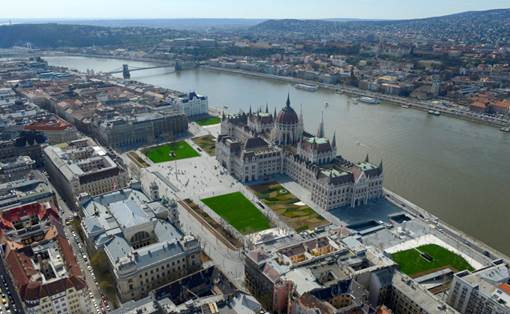
Mr Secretary of State underpinned that natural diversity of the Danube valley goes together with its cultural diversity. As we have to protect the plants and animals living here, we also have to protect dialects, folk arts and traditions. We think that these are also values to be protected. Among others the institute of Hungaricums and National Park Products are for this purpose.
V. Németh stated that the river is also changing continuously – partly naturally, and partly reflecting human activities that need to be harmonized and to concert.
The welcome speach in English is available here.
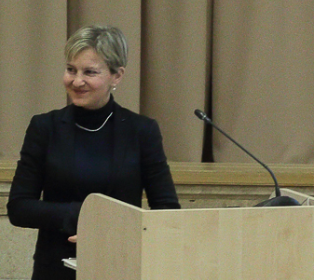
2. Julie Raynal: Guidance for green and blue infrastructure
In her presentation Julie Raynal, representative of the European Commission, DG Environment recalled the EU policy context, including the Birds and Habitats Directives and the Natura 2000 network ; the EU Biodiversity strategy to 2020; the EU green infrastructure strategy ; ), the Water Framework Directive; the Floods Directive are all in harmony.
The EU Macro Regional Strategies are also relevant in this context, in particular the EU Strategy for the Danube Region (EUSDR) , the EU Strategy for the Alpine Region (EUSALO EUSALP), and the EU Strategy for the Adriatic and Ionian Region (EUSAIR).
Guidance for green and blue infrastructure
Julie Raynal presented latest developments on green and blue infrastructure at EU level. The Commission is working to raise the visibility of nature's contribution to human wellbeing and to the economy while also supporting the objectives of EU nature legislation. As part of the Action plan for nature, people and the economy, the Commission is preparing a guidance document on a strategic framework for further supporting the deployment of EU level green and blue infrastructure projects (GI), with a view to enhance the delivery of essential ecosystem services throughout the EU territory, and improve the coherence of the Natura 2000 network in a transboundary perspective.
This guidance will help scaling up investments in nature, making them more effective and targeted through the development of guidance for investment. It is also finalising a review of progress in implementing the EU green infrastructure strategy (adopted in 2013); which will also inform this guidance. Under the same action, the Commission will also further develop nature-based solutions through EU research and innovation policy and Horizon 2020 funds, emphasising the synergies with green infrastructure approaches.
The guidance document will also introduce how to better integrate ecosystems and their services in planning and policy decisions. This guidance will help decision-makers to identify potential synergies between maintaining healthy ecosystems, on the one hand, and ensuring human well-being and prosperity, on the other; and to incorporate them better into plans, policies and investment decisions.
She also mentioned the new EU initiative on pollinators, which aims to establish an integrated EU approach to tackle the decline of pollinators by raising its political profile and increasing the effectiveness of EU policies for pollinators.

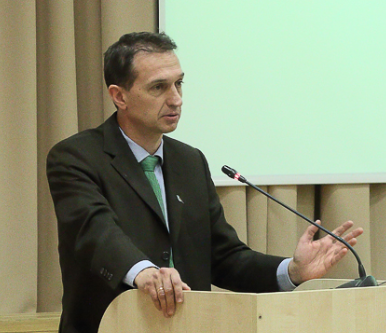
3. Mr András Schmidt: “ships should be adopted to the river and not the other way around”
Focus of nature conservation shifted from site and species protection towards biodiversity conservation as such in the 1990s. Ecological network is more than a network of protected areas of national, international and EU level; it is a living network; it can be an effective tool to integrate biodiversity protection into cross-sectorial policy.
Ecological corridors maintain or recover coherence among habitats, also they enlarge habitats, ensure dispersion of animals and plants. They refuge areas, support re-colonisation of formerly abandoned habitats. These areas mitigate different threats, for example fragmentation, or the symptoms of climate change.
Ecological corridors can be
- Linear (continuous – green or blue) corridors: uninterrupted strips of vegetation;
- Stepping stone (disconnected) corridors: series of non-connected habitats providing area for shelter, food and rest;
- Landscape corridors: uninterrupted landscape elements.
Act LIII. of 1996 on Nature Conservation (1996. évi LIII. törvény a természet védelméről) in its part 53. § states that the Nature conservation master plan contains the long and medium term aspects of designation and maintenance of ecological network and ecological corridors. Parts of ecological corridors can be areas (including strips, mosaic-like sites and their chains) which ensure or promote biological connections and contain several protected areas; buffer zones of protected areas; Natura 2000 sites; environmentally sensitive areas (high nature value farmland); and natural areas.
Act XXVI. of 2003 on National Spatial Plan (2003. évi XXVI. törvény az Országos Területrendezési Tervről) incorporates national ecological network that can incorporate core areas, ecological corridors, and buffer zones. It defines ecological corridors as: mostly linear expanded, continuous or disconnected habitats, habitat lines, mosaics, fragments, trains mainly with natural origin, which are adapted to ensure biological connections between other habitats of the network (core areas and buffer zones).
The document states that for the provision of national ecological network only regional and county-level land-use category changes can be established that do not threaten the natural and semi-natural habitats of the network and their relationships. In ecological corridors establishment of built in zones is forbidden (only possible in special cases); surface quarrying and enlargement of quarries are forbidden; elements of transport and energy infrastructure networks, power stations and small power stations can only be placed if using technical solutions that ensure the survival of natural habitat and functioning of the ecological relationships between them. Changes over 1 hectar must be reported to the ministry that is responsible for environment protection, and that must approve the plans.
Since 2008 the area of the national ecological network has increased by 42.152 ha, which is 0,4% of the whole Hungarian territory. In 2016 36,4% of Hungary is covered by the national ecological network (3.389.206 ha). Its zonal division is the following: 54% core zone (1.813.495 ha); 25% ecological corridor (853.319 ha); and 21% buffer zone (722.392 ha). The proportion of the zones has not changed during the modifications. In total, 58% of the national ecological network is part of the Natura 2000 network, and 25% is area protected by national law (841.329ha) as well.
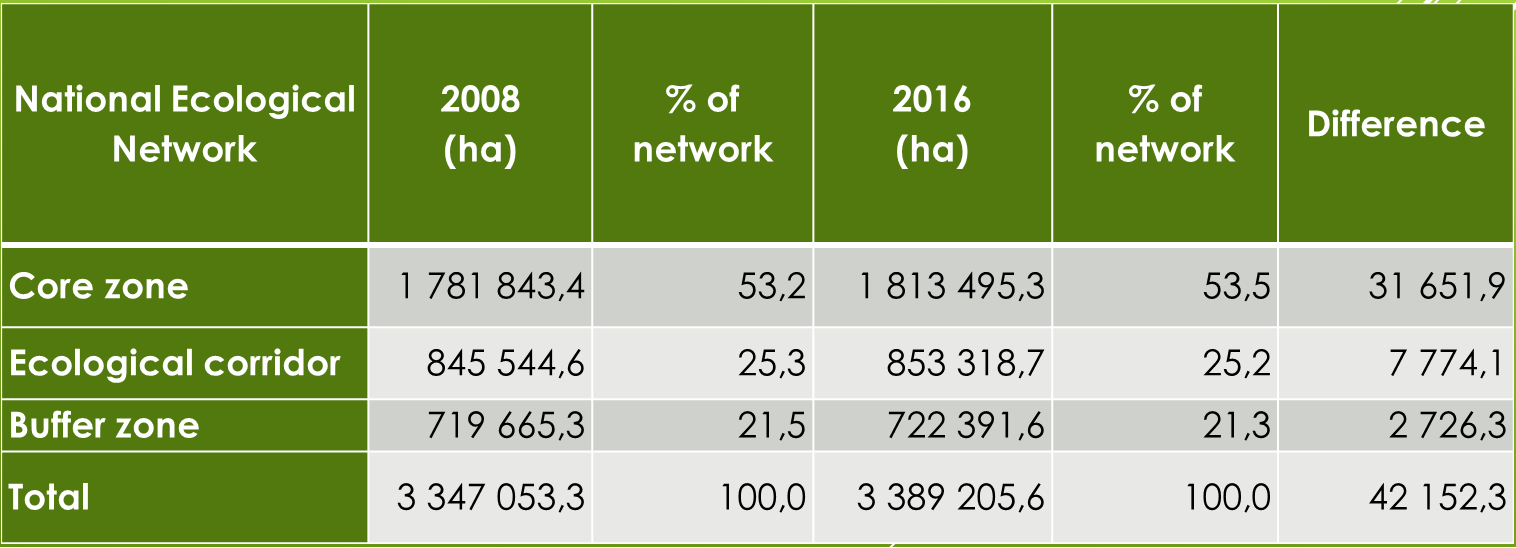
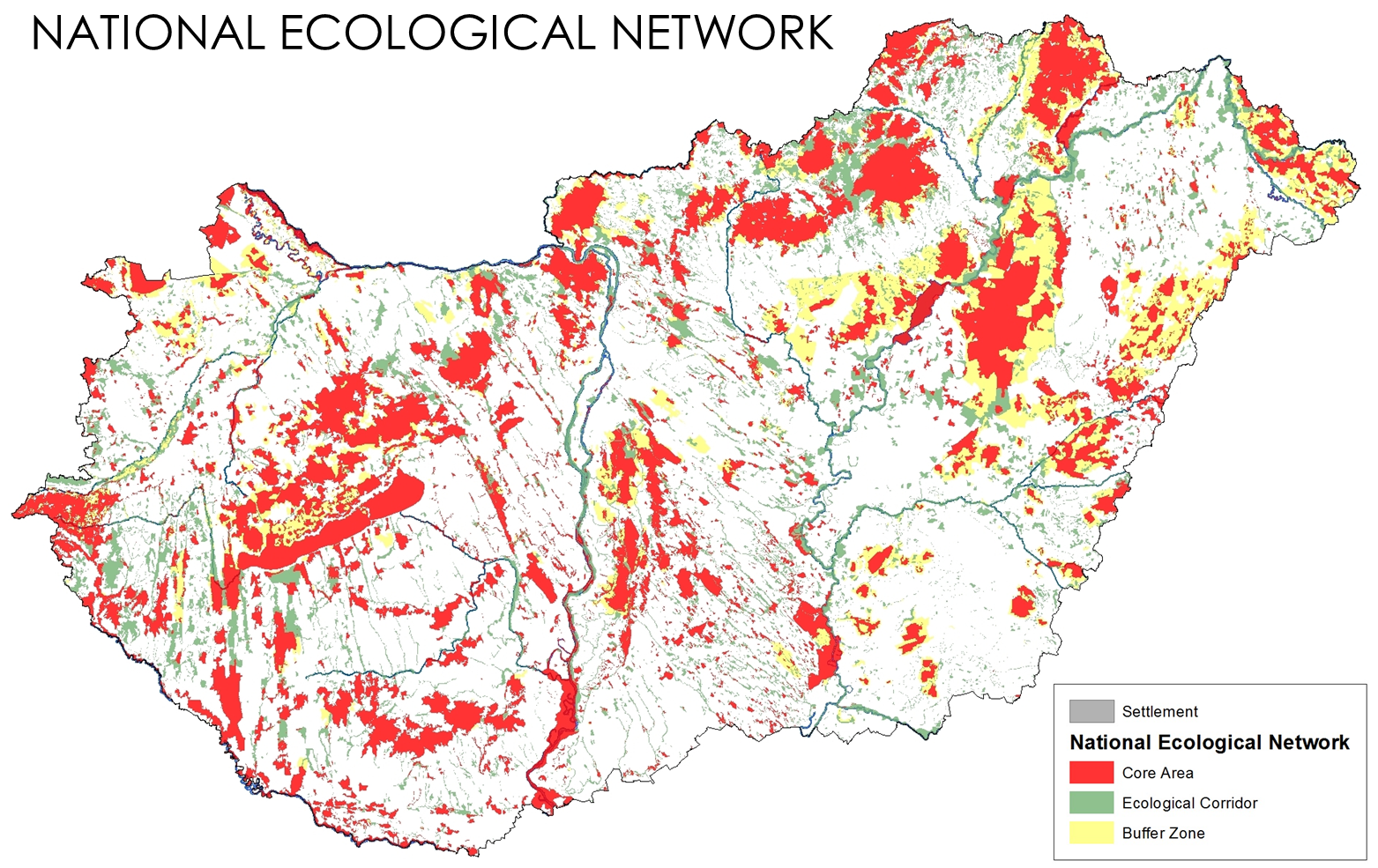
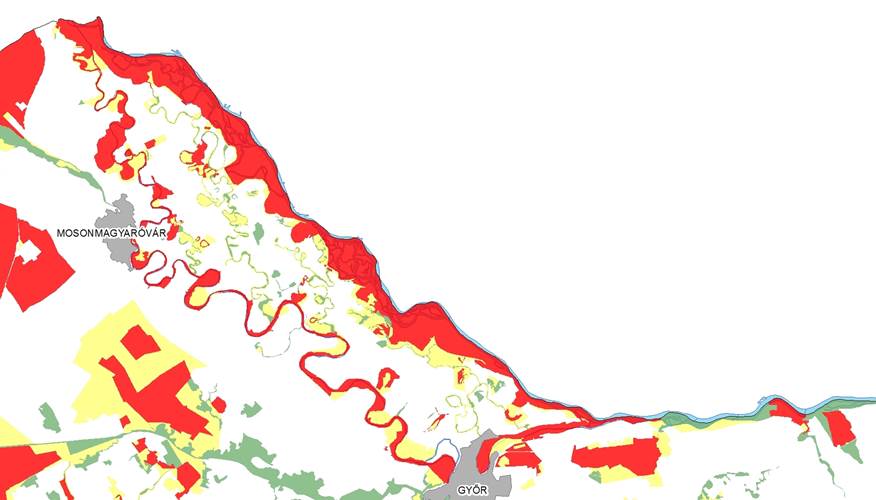


Due to experience, conflicts may occur with mining (gravel, sand, peat, dolomite), built-in areas, industrial zones or other industrial activity, leisure activities, floodplain management, navigation development. András Schmidt emphasized that Hungarian government has adopted in 2012 a policy that states that ships should be adopted to the river and not the other way around. (Magyarország „a Duna hajózhatóvá tétele érdekében minden mederátalakítási műveletet elutasít. Nem a folyót kell a hajókhoz, hanem a hajókat a folyóhoz alakítani."). For more information please download the Hungarian language info sheet titled “A Duna, mint víziút fenntartható hasznosításának környezeti alapvetései”.
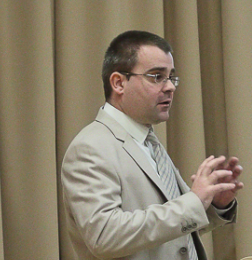
4. András Weiperth: balance of ecosystems of the River Danube is sensitive
Mr András Weiperth (MTA Centre for Ecological Research, Danube Research Institute, Budapest) stated that Danube basin is a unique multicultural ecological corridor as the Danube runs through 10 countries and 4 capitals and the basin is connected with 19 countries. It provides drinking water for some 23 million all day. It has connection with 5 geographical regions (Alpine, Continental, Steppic, Black See and Pannon), from which one is totally part of it (the Pannon biogeographical region). It has special habitats with different problems requiring different solutions.
It is also complex because of endemic species, of non-native species and unique mix of these two. Before water regulation the Carpathian Basin was a region of pools. After it the region lost forests (from 85% to 19%) and floodplains (from 24% to 2%). The problem is, that “destruction of the natural and semi-natural landscape in the wild and near settlements is more and more evident. The demands of agglomeration areas of larger settlements are manifold and result in hotspots of conflicts.” Sometimes the question is worded as: nature protection or economic development? Water regulation helps improvement of navigation, while there are other possibilities for transport, for example railway.
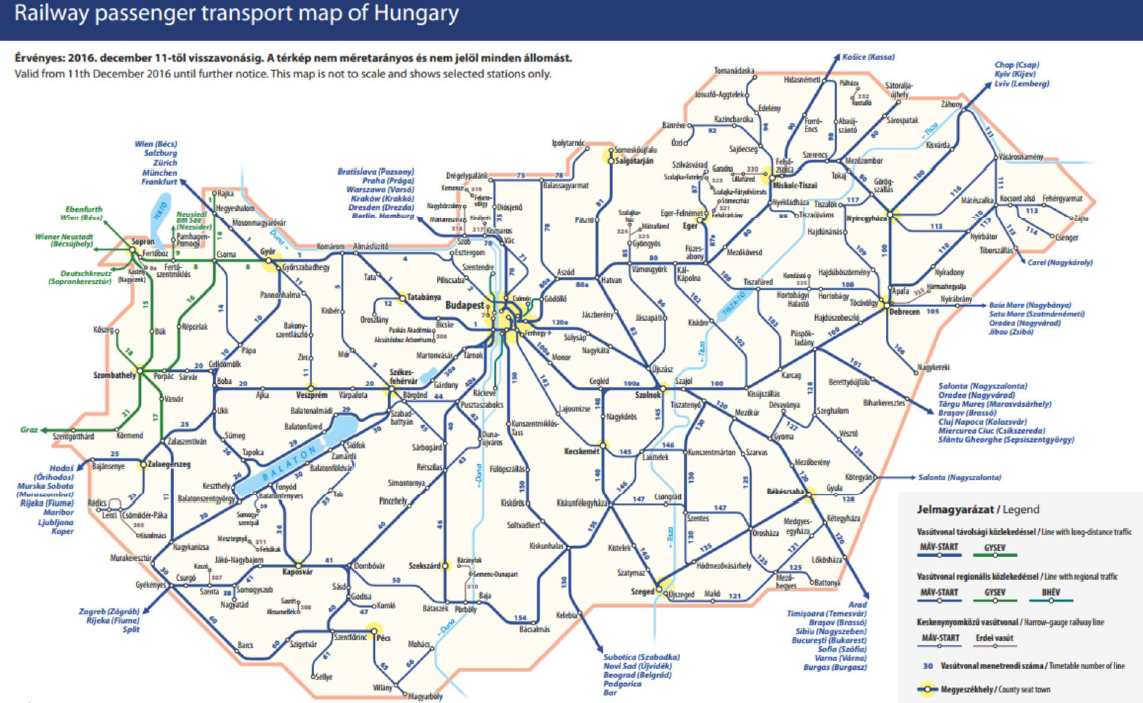
Mr Weiperth also mentioned ecosystem services of Danube, emphasizing the ones like leisure time fishing and canoeing.
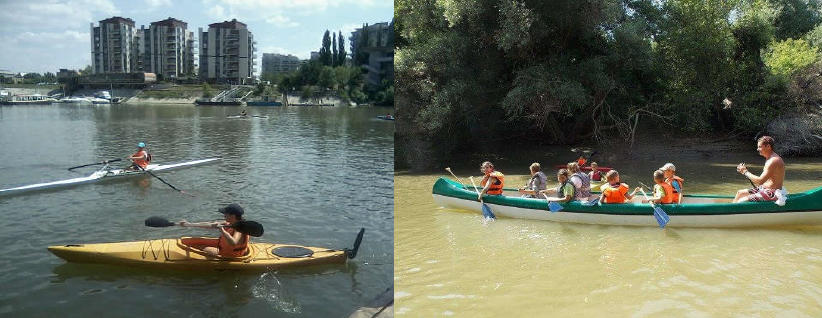
Changing of fauna
Fish fauna in the Danube basin has started to change considerably since the 19th century. In last decades the main origin is aquarium trade; and its main supporters are warm water effluences in the River Danube at Budapest and Paks.
In the last decades several new crayfish species have released and spread in the main arm and the tributaries of River Danube. Effects are not predictable, but they are very invasive (Red swamp crayfish is observed in two tributaries of Danube under Budapest – it is invasive, eats everything: fish, vegetation etc. and can move 10 km/night, it destroys biodiversity of sites and is three times bigger than in natural habitats in USA.)
Several exotic freshwater turtle species have been released, spread and produce new population in the side arms and tributaries in the Danube basin. They can have negative effects to the population of native pond turtles.
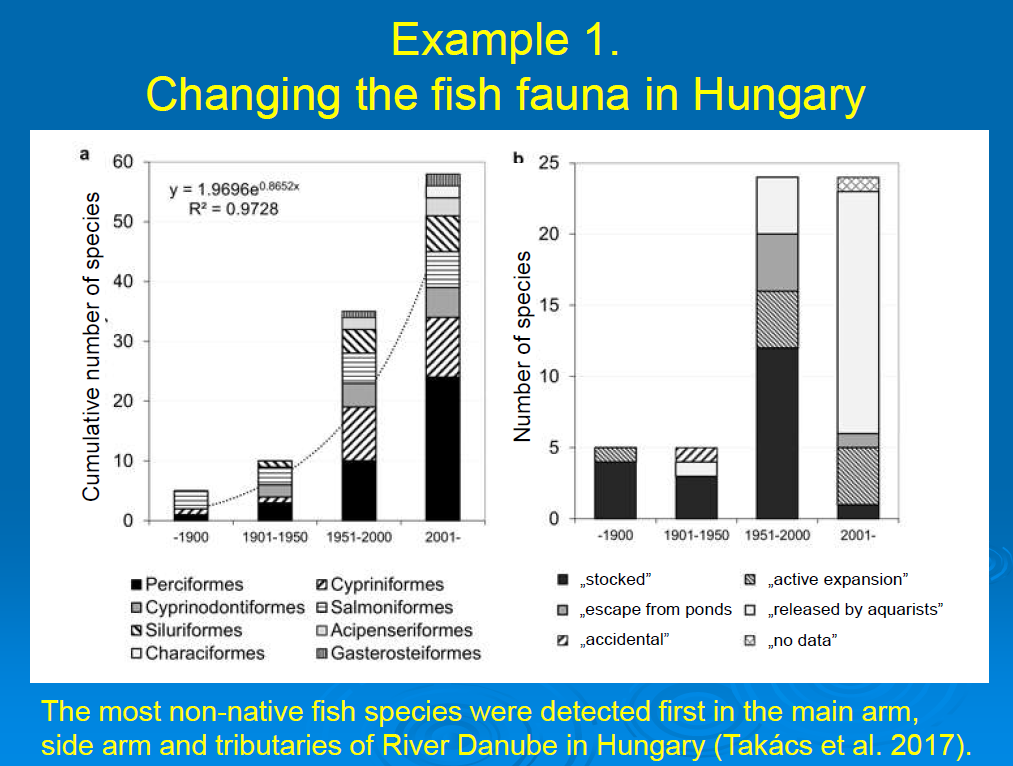
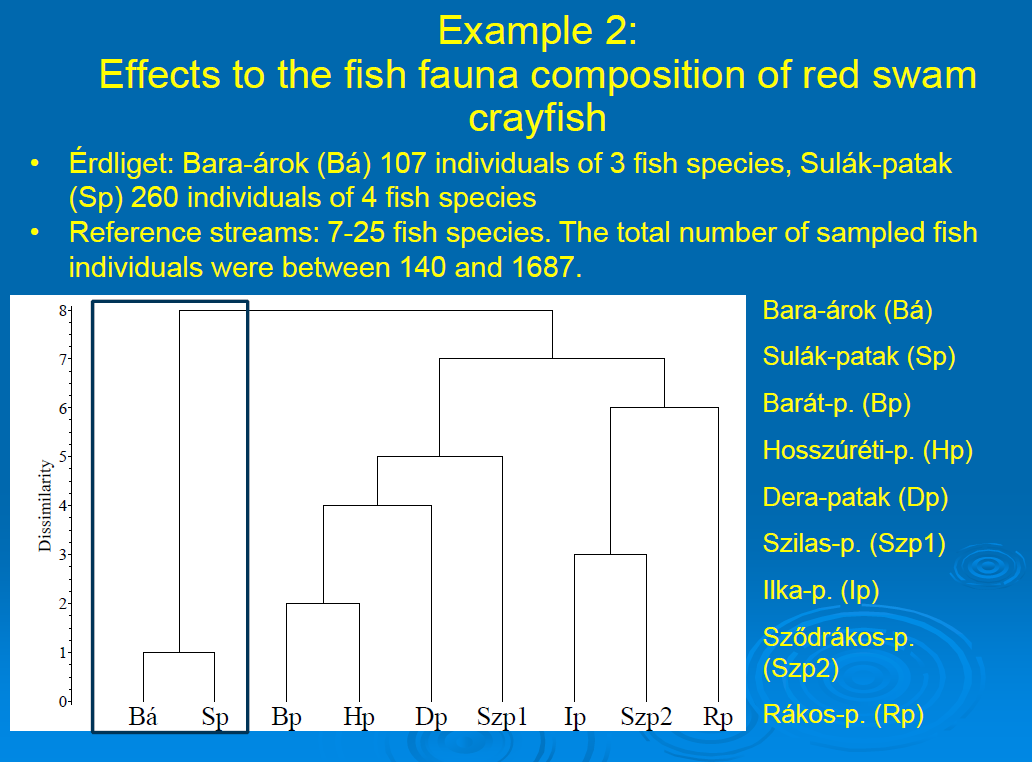
Conclusions are as follows:
- River Danube connects and separates the most biogeographical regions in Europe.
- Several special habitats and endemic, protected NATURA 2000 species occur continuously or periodically in the Danube basin.
- Different human activities have different effect to habitat structure and size of species populations.
- Parallel with river regulation and the opening of the Rhine–Main–Danube Canal several non-native species have occurred and spread across the whole European Watershed.
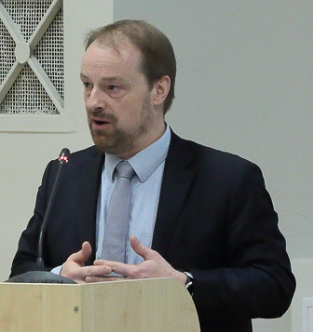
5. Florian Ballnus: Masterplan Bavarian Danube as an example for integrated implementation of EUSDR and PA06 goals
As Florian Ballnus, Coordinator of PA6 of the EU Strategy for the Danube Region stated, Masterplan of the Bavarian Danube is a conceptual framework for environmental protection for the Bavarian Danube and its floodplains.
It is not legally binding, but provides an orientation framework. It contains a systematic review of landscape elements and proposals for activities by 15 key projects. It took five years to formulate the Masterplan from the first idea to its publication. It was finally published on 20th September 2017.
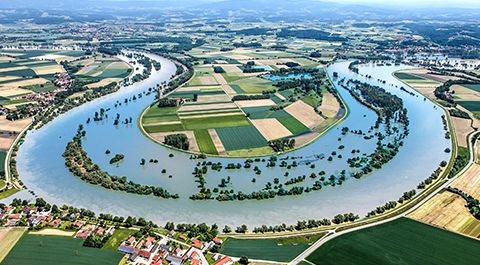
Integration among stakeholders
There was a wide consultation process with public and private stakeholders. Communication and negotiations among different stakeholder groups such as environmental NGOs and public authorities sometimes was a notable challenge. At the same time, the joint elaboration process is one unique feature of the Masterplan and thus an example of stakeholder involvement in the implementation process of PA 06 and the EUSDR.
The following landscape elements are featured in the Masterplan:
- River and recent Floodplains
- Old Floodplains
- Cultural Landscape in the valley
- Steep Slopes and Terraces
- Danube Corridor
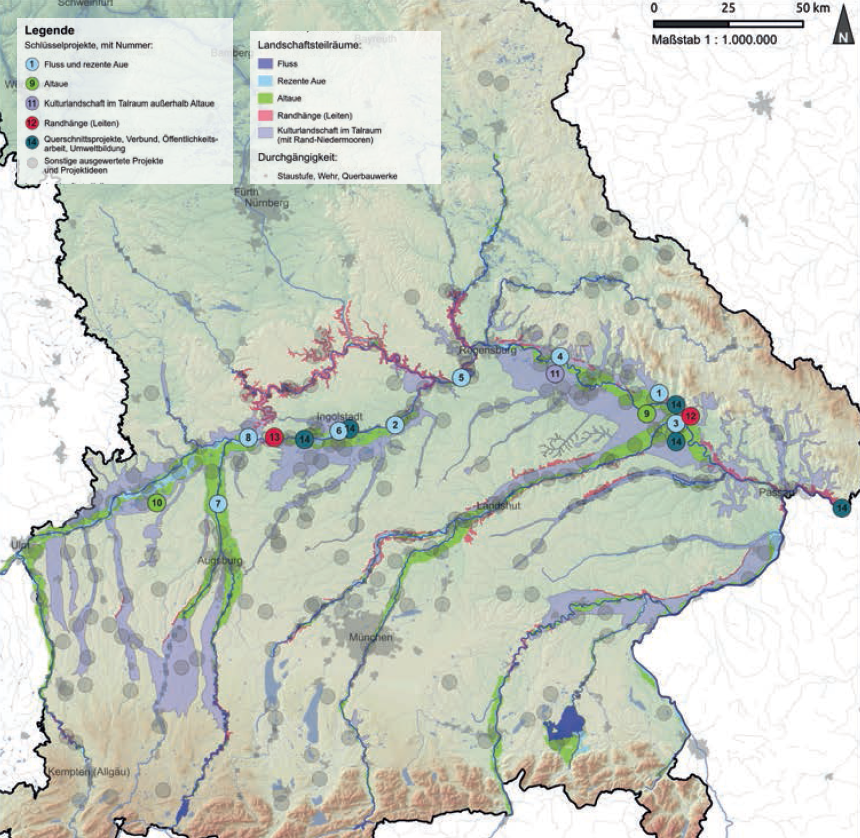
The structure of the Masterplan is as follows:
- Preamble
- Guiding principles
- Biodiversity, inventory, development goals and measures
- Implementing through key projects
- Proposed list of key projects and outlook on their possible funding. (The first key project is already part of DANUBEparksCONNECTED project.)
- Masterplan in the context of EU Danube Region Strategy: PA 06 is ready to share the experiences made in the elaboration of the Masterplan with other States or Regions in the Danube Region. It is obvious that the methods cannot be simply transferred, but it would definitely support the implementation of the aims of EU Danube Region Strategy to start similar processes in a “Masterplan-Network” and by this to contribute to the Danube Green and Blue Corridor. The implementation process furthermore foresees to include landowners and further stakeholders from the beginning.
Original document (Masterplan zur Entwicklung und Auswahl von Projekten zur Umsetzung der Europäischen Donauraumstrategie in Bayern) is available here.
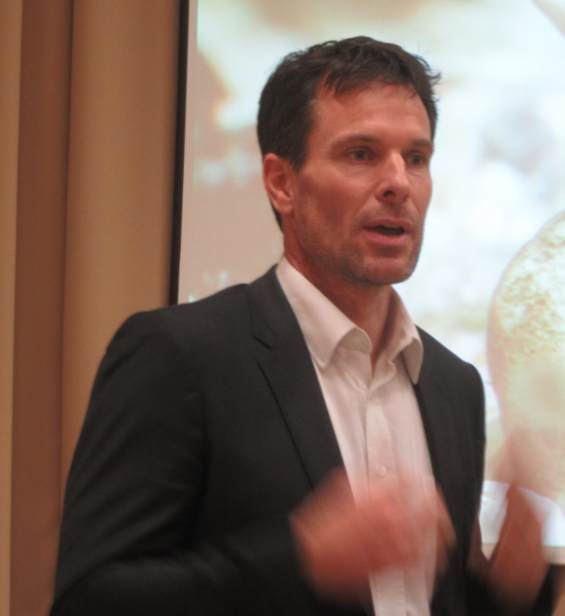
6. Mag. Georg Frank: Bridging the Danube protected areas
Presentation of Georg Frank was from project level. As he words, Danube Valley is a habitat, for example of sturgeons. In the same time hydropower dams intervene its habitat and lifestyle. Normal fish bypasses are two small for sturgeons even if they are important contribution to (other) fish migration.
Danube River is a hotspot for European biodiversity; it connects small biogeographical sites as a complex network. It homes more than 5000 animal species, more than 2000 plant species, 100 fish species and 40 mammals. Every species need special help. So protected areas like National Parks along the river are very important, just as well as their networks e.g. Danube Parks.

Islands in the river are extremely important for species. They are good habitats, stepping stones in the corridor. Along the River Danube there are 563 Danube islands with altogether 10,660 hectares in the concept. In the territory of Romania and Bulgaria there are a lot, giving good possibility for cross border cooperation. They can formulate the so called WILDisland Habitat Corridor . Frank introduced one example in Persina Nature Park, Bulgaria. Here wild and treated habitats were examined. Results can be found at the Danubeparks website. It is important to protect these islands, so cross sectoral cooperation is needed. Water regulation can easily destroy them.
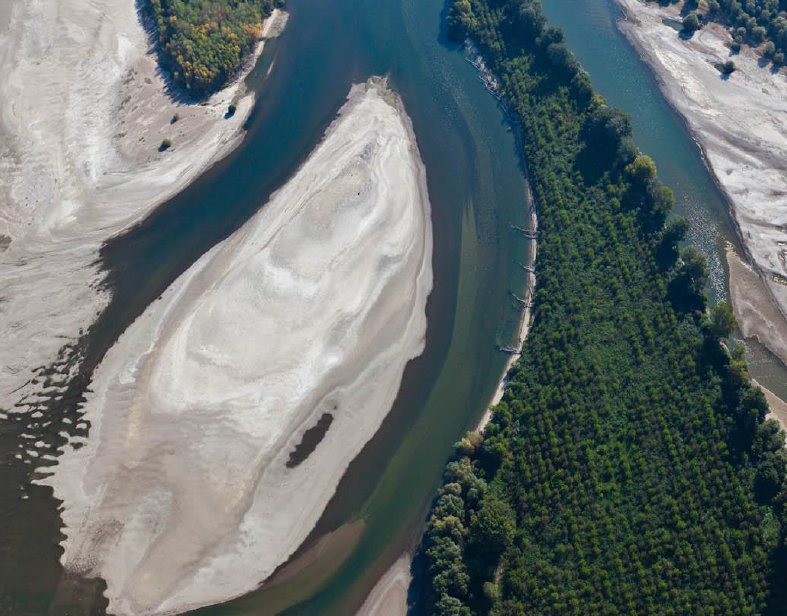
Another example is Danube Free Sky Programme which is for protection of birds of Europe. Just in Germany 2,8 million birds are killed by electric shock coming from collision with electrical wire per year. Rivers are high risk areas as they are feeding sites. Technical solution exists, which can reduce mortality by 60-90%. There is 12000 km power lines along Danube, from which 2700 km in Natura 2000 areas. Solution is to convene together people from energy and conservation sector. A conference was organised for them in February 2017; that raised awareness, cross-sector dialogue started, got support from policy level. So recently pilot actions are in preparation.

Frank Georg also mentioned that Memorandum of Cooperation between the Alpine Network of Protected Areas (ALPARC), the Danube River Network of Protected Areas (DANUBEPARKS) and the Carpathian Network of Protected Areas (CNPA) has been signed in October 2016. First pilot project was making a link between the two mountains in the area of Vienna and Bratislava.
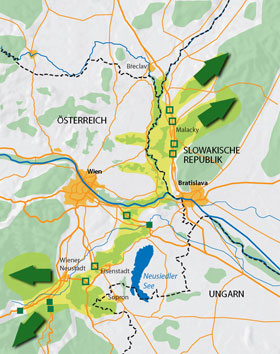
- Further information on the ecological connectivity between Alps and Carpathians in Hungarian language is available here.
- More info on Danubeparks can be available here.
- Intro film on DANUBEPARKS is available here.
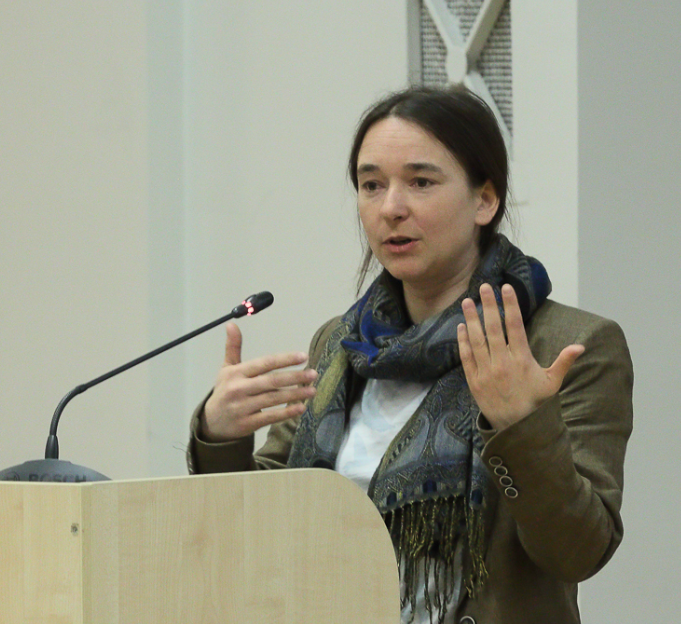
7. Magdalena Wagner: Mura-Drava-Danube Transboundary Biosphere Reserve has great restoration potential
Transboundary Biosphere Reserve Mura-Drava-Danube (TBR MDD) connects three rivers in their free-flowing stretches, on a length of more than 700 km. Not only are the rivers free-flowing, they are also in many parts quite natural: river dynamics form steep banks and gravel banks, and connect the rivers and side branches to the wide floodplains.
This lateral and longitudinal connectivity is a precondition for the existence of many threatened species: Typical river birds like the endangered Little Tern or the European Kingfisher still nest here - they need undisturbed dynamic habitats like gravel islands (Little Tern) and steep river banks (Kingfisher). The last catches and observations of nearly extinct ship sturgeon within the whole Danube River Basin were made inside the TBR MDD – this species is dependent on long uninterrupted connections between the Danube River and its tributaries.
The area also has great potential for restoration, due to wide floodplain forests beside the river:
- 60% (652 km) of impacted banks could be restored;
- 120 side-branches (519 km) could be re-connected;
- 36% (165.318 ha) of the floodplain could be re-connected
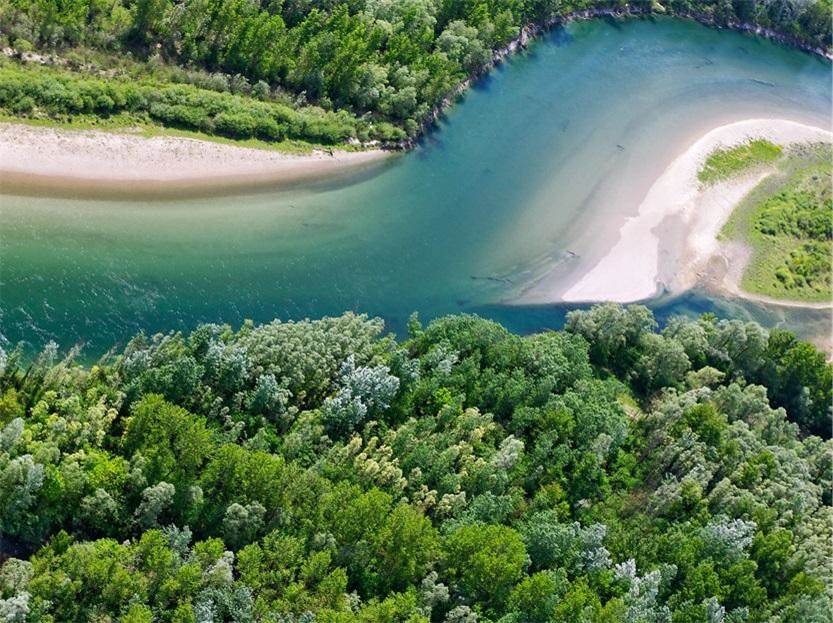
Unfortunately, there are also severe threats to the connectivity of this extraordinary 3-rivers corridor: Both on Mura and Drava, hydropower plants are planned within the currently free-flowing stretches, which would completely destroy the natural dynamics and the ecological connectivity. WWF is campaigning against both, always together with NGO coalitions of the respective country.

Forming of the Mura-Drava-Danube Transboundary Biosphere Reserve is a long process: While the Hungarian-Croatian areas were designated in 2012 and the Serbian ones in 2017, further areas in Slovenia and Austria are “in the pipeline” to join soon. Mostly those are free flowing river stretches, which are of high natural value, however some impounded river stretches are included as well, to make the way for restoration and improvement of their residual flow stretches on Old Drava.
The Protected Areas within the future 5-country Biosphere Reserve are now working together within the Interreg-Danube project coop MDD , to harmonize the management of the area and set up the long-lasting coordination in this 5-country-area. The team includes 11 project partners from 5 countries (including two WWFs, 8 Protected Areas, one Municipality) and 13 associated partners.

Goals and activities are:
- Coordinated management - Transboundary Cooperation Programme, including Guidelines for a dynamic river corridor and a Transboundary Action Plan;
- Support by the local population - RIVERS‘COOL Network, a network of outdoor education centers directly at the riverside;
- Continued cooperation - Preparation of follow-up projects;
- Political support - Cooperation with UNESCO, EUSDR, Ministries, focusing on the 5-country nomination of the TBR MDD.
For more information:

8. Michaela Künzl: potentials for Alpine-Danube cooperation
EU Alpine Region Strategy (EUSALP) is the youngest region of the four Macroregional Strategies in Europe; it started its operative work only in 2016. First step was to formulate their mission: to be a model in Green Infrastructure (GI) integration of urban and rural areas. They also started networking, found new partnerships and setting their political agenda. All together 27 state and region signed (2nd October 2017) Joint Declaration in which benefits of Green Infrastructure are emphasized, and it was goaled to make Alpine region a model region for GI, asking for provision of appropriate governance and financing mechanisms.
This document was the mandate for Action Group 7 which focuses on developing ecological connectivity and thus to strengthen, improve and restore biodiversity, as well as ecosystem services. Its implementation will increase the degree of connection between natural and semi-natural landscapes in the entire EUSALP territory. The tasks of EUSALP Action Group 7 are diverse:
- identifying priority areas of trans-European importance as Alpine segments of an European Green Infrastructure;
- developing criteria for selecting those priority areas and related EU relevant Alpine Green Infrastructure projects;
- setting up pilot cases of EU relevant Alpine Green Infrastructure projects to elaborate appropriate governance mechanisms for an improved transnational and cross-sectoral coordination, based on comparable experiences, such as the existing Trans-European Networks;
- initiating – on a voluntary basis, together with diverse sectors and stakeholders, including land owners - concrete on the spot implementation measures to close strategic gaps in the Alpine Green Infrastructure network, to explore appropriate funding schemes and to support inter-communal/regional cooperation.

At the moment EUSALP Action Group 7 are working on “GI project framework”. In the future they plan:
- Consolidate project framework for Alpine GI projects and trigger concrete projects of European relevance in accordance with European process;
- Diversify and enlarge network of implementation partners (e.g. agriculture and forestry);
- Financial dialogue (with regard to the political declaration);
- Cooperation with other European mountain regions and macro-regional strategies.
There will be an ENCORE Conference in autumn for macro-regional strategies in Denmark, where one of the main focus points will be GI.
There are potentials for Alpine-Danube cooperation such as joint implementation projects, strategic cooperation, workshops and spatial activity areas – stated Michaela Künzl.
9. Cultural diversity – cultural corridors
Cultural diversity in the Danube valley is at least as colourful as natural diversity. Some songs illustrated this: first about Tisza River, biggest tributary of Danube; second about Danube River, reflecting the changing and wavering moods of love relations.

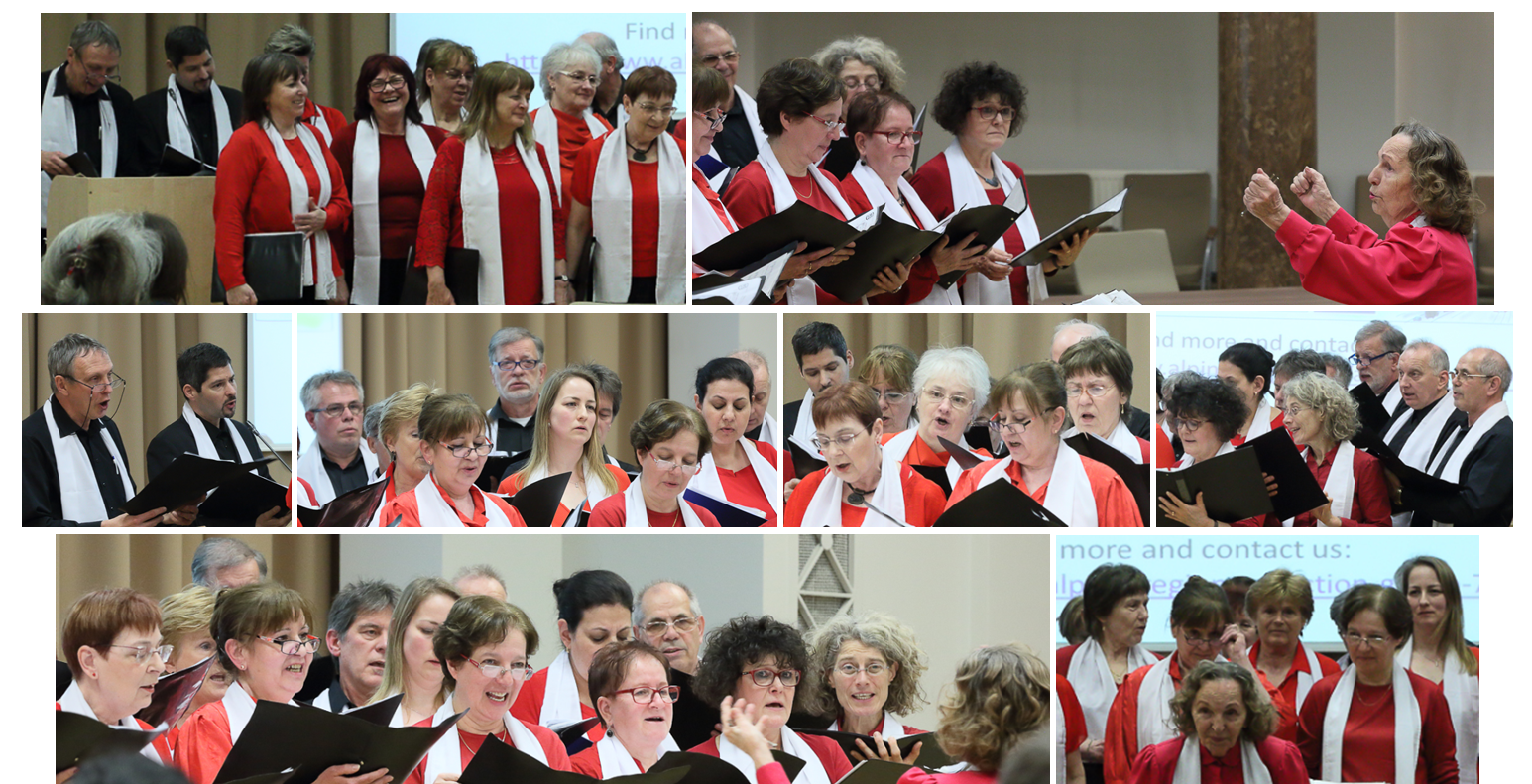
Hungarian Ministry of Agriculture is also responsible for the collection of Hungarikums – the collection of Hungarian Values. Dance-houses, where people gather to dance for original folk music are also recognized as Hungarikums, together with the world famous way of music education, the Kodály method.
The leader of our choir, Ms. Ilona Háray was the student of Zoltán Kodály at the Hungarian Academy of Music , and in 1957 she founded the special music faculty at the Bajza elementary school. Most of the members of the Bajza Choir were her pupils there. We surely can note that she is one of the true representatives of the Kodály method.


10. Dr. Cristina Sandu: “Ecological tourism can be a solution for local economies”
At the workshop on eco-tourism Dr. Cristina Sandu stated in her presentation that the eco-tourism could be a sustainable and soft alternative to develop local economies, if such activities will fully respect environmental values and the carrying capacity of the natural ecosystems. When local conditions allow not more than 500 tourists, it is not wise to attract 50000, as this will lead to a fast destruction of the natural attractions, triggering not only the loss of eco-tourism but also of the ecosystem services provided to local communities (drinking water, food, climate mitigation, nutrient cycling, recreation, education and others).
An increasing number of people prefer to avoid mass tourism, opting for slower ways of tourism, where one can have unique experiences, spend longer quality time at the same site, exploring local values, while in the same time, provide more income to local services, improving the economy of local communities, which ensures a good basis to develop eco-tourism in the Danube Region.
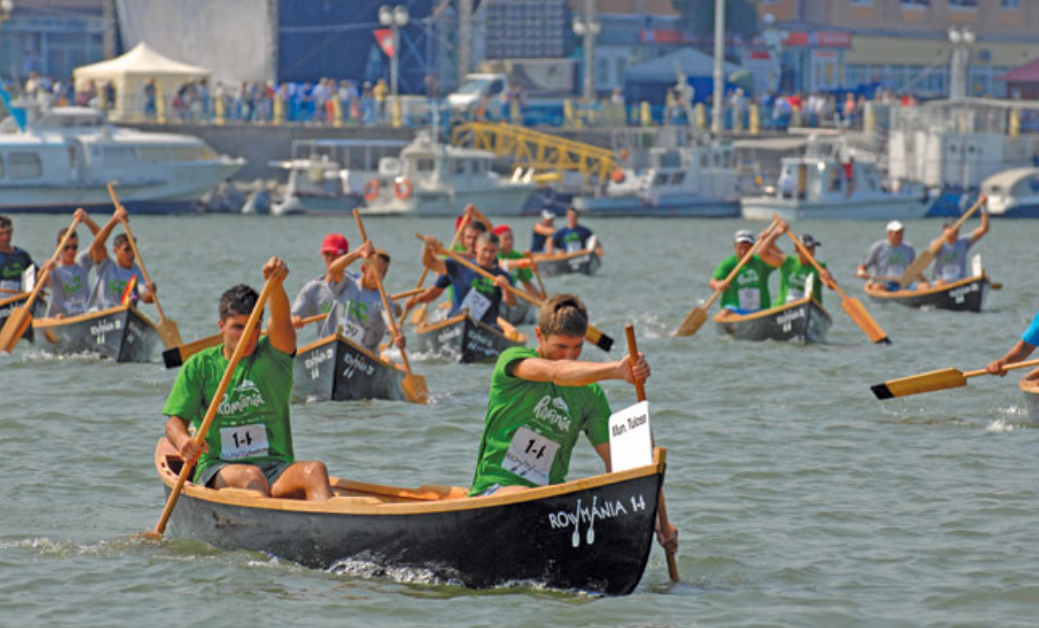
Special caution should be taken especially near or in areas belonging to Natura 2000 network, to prevent negative impacts on protected species and habitats, both from locals and tourists. Raising awareness on the role of biodiversity for human society can help local communities understand that their wellbeing and livelihood depend on the functionality of natural ecosystems, and hence, increase their support for nature conservancy. In particular, the case of the Danube sturgeon was mentioned, where illegal fishery and caviar trade threaten the implementation of the conservation program Sturgeon 2020 . The need to secure alternative livelihood for local communities was highlighted as a key measure to prevent their engagement in illegal fishery – in this respect, eco-tourism can be a viable solution to help not only the sturgeons (so-called “dinosaurs of the Danube”) and the Danube ecosystems, but also the local economies.
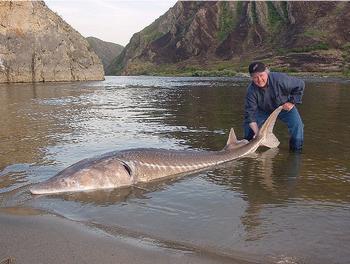
Developing eco-tourism activities should be based on the four principles of the World Sustainable Tourism Council and the European Ecotourism Network:
- Demonstrate effective sustainable management (considers environmental, socio-cultural, quality, health, and safety issues).
- Maximize social and economic benefits to the local community and minimize negative impacts (employment of local people, improved quality of life, opportunity for local entrepreneurs to sell local products, etc)
- Maximize benefits to cultural heritage and minimize negative impacts (material and non-material heritage: architecture, archaeological sites, traditional handicrafts, food, songs and music or customs)
- Maximize benefits to the environment and minimize negative impacts - includes the responsible use of natural resources: favors environmentally friendly products, favors increasing efficiency in the consumption of energy/ water and waste management; controls the interaction between tourists and wildlife.
According to the conclusions of the 2nd European Ecotourism Conference (Brasov Declaration) ecotourism destinations in Europe should have:
A protected area associated with the destination;
A critical mass of local ecotourism businesses;
A sustainability plan under implementation, in developing ecotourism;
Nature and local culture as the main ingredients in product development and marketing;
Active participation of local communities, empowered through education and awareness raising, based on shared values.

Special attention should be given when developing eco-tourism activities near freshwater environments, as their biodiversity is highly jeopardized by the multitude of human pressures: the 2016 report on the status of biodiversity (Living Planet, WWF ), shows that freshwater biodiversity declined nearly 80% since 1970.
Eco-tourism in Kirgistan has been mentioned as a good example: an association to promote eco-tourism services was established to serve customers with updated information as a kind of destination management. It is available here.
Participants to the workshop expressed their opinion that the elaboration of an Eco-tourism Strategy for the Danube River Valley could provide benefits to the local communities, in certain conditions:
- the strategy should be based on the carrying capacity of the natural ecosystems along the Danube River (to prevent their destruction by an unstainable use or a too high number of tourists),
- the activities and estimates of acceptable number of tourists in certain periods should be established with the support of nature park managers and biodiversity experts,
- a transnational coordinating body in charge of the sustainable management of the destinations should be established, and
- raising awareness activities on the importance of biodiversity in providing numerous ecosystem services to human society should take place: food, drinking water, regulation of climate and atmospheric composition, mitigation of floods and droughts, pollination, soil fixation, recreation etc.
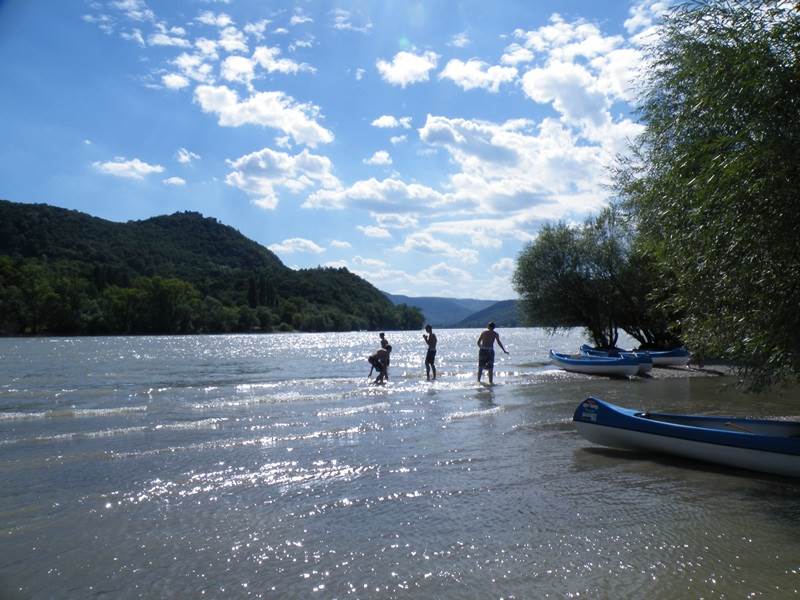
It was agreed that
- Eco-tourism activities should be developed by fully respecting the integrity of the natural heritage.
- The criteria of the European Ecotourism Network should be adopted when planning eco-tourism activities in the Danube Region.
- An Eco-tourism Strategy for the Danube River could provide mutual benefits for nature conservation and local communities.
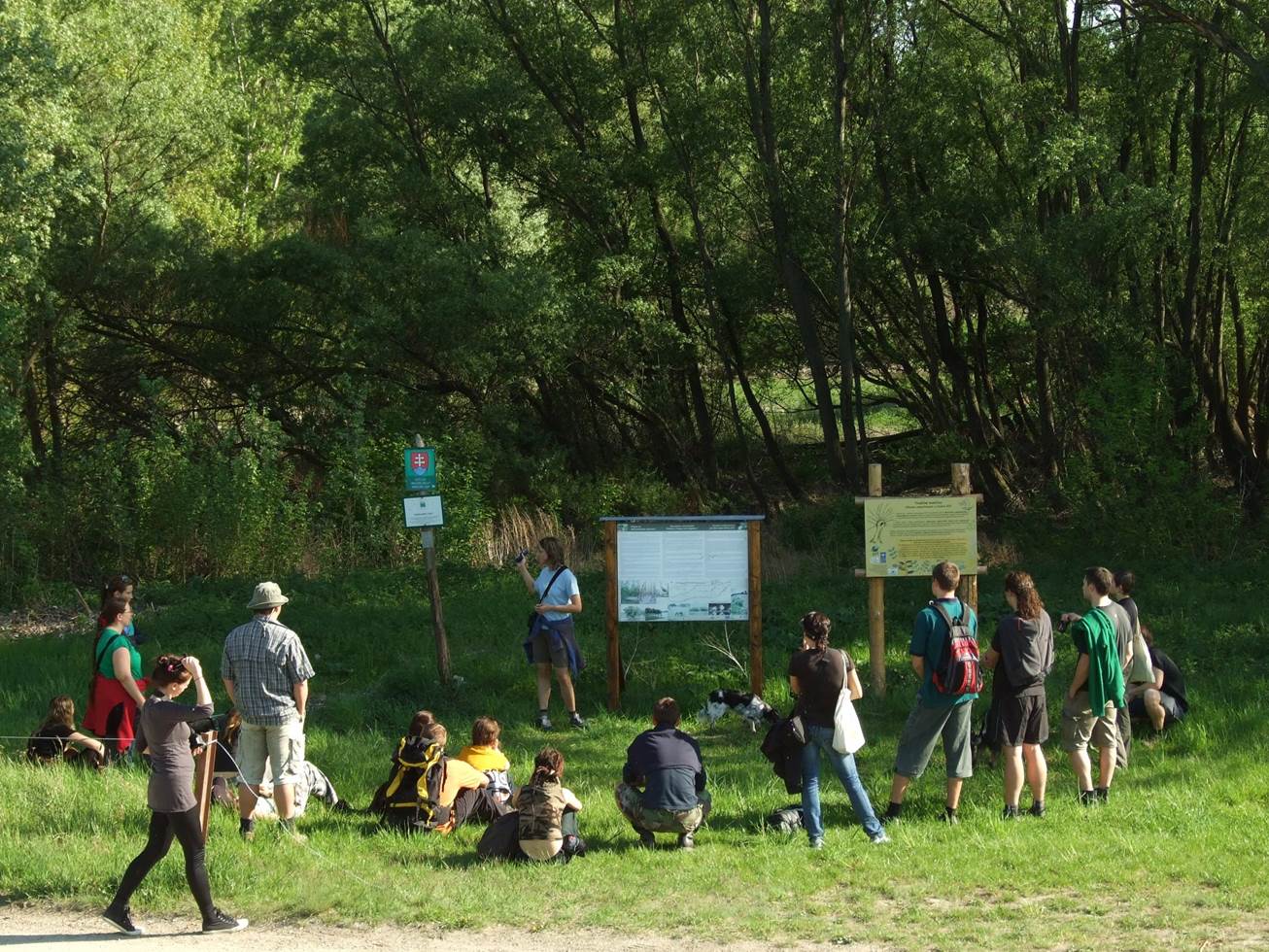
Possible leverage of eco-tourism: cycling, which also have a low ecological footprint
The participants to the workshop agreed that cycling can be a valuable option of eco-tourism as it is an active mode of transport with low ecological footprint, offering great possibilities for exploring local values. In Hungary the bicycle route around Danube is the most popular, as it is not an artificial route, but the river appoints its direction. Still, it is mostly used only from North of Budapest.
The representative of the Ministry of National Development introduced briefly the EuroVelo 6 project, where the feasibility study for the development of biking conditions is almost finalized and construction works are planned to begin in 2019. The goal is to have safe and attractive biking route along the Danube between the western borders and Budapest by 2021. The project involves cultural heritage, introducing traditions, proper resting opportunities and info boards.
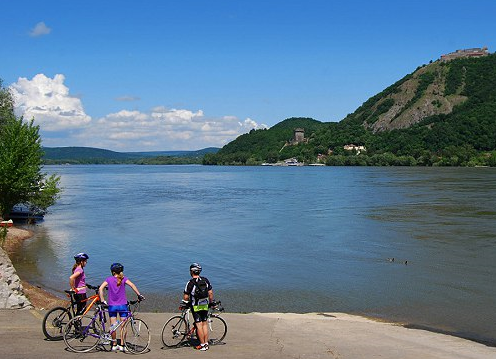
Representative from Budapest 14th District (Zugló) presented briefly the project funded by the Danube Transnational Program, where background measures for cycling tourism will be in focus. The project will establish seven pilot projects: different kind of stops / resting areas for cyclists will be tested, together with tenting sites, charging possibilities for e-bikes and smart phones, info points on local sights. The hope is that the project will show how settlements can benefit of being part of the Euro Velo 6 international cycling route.
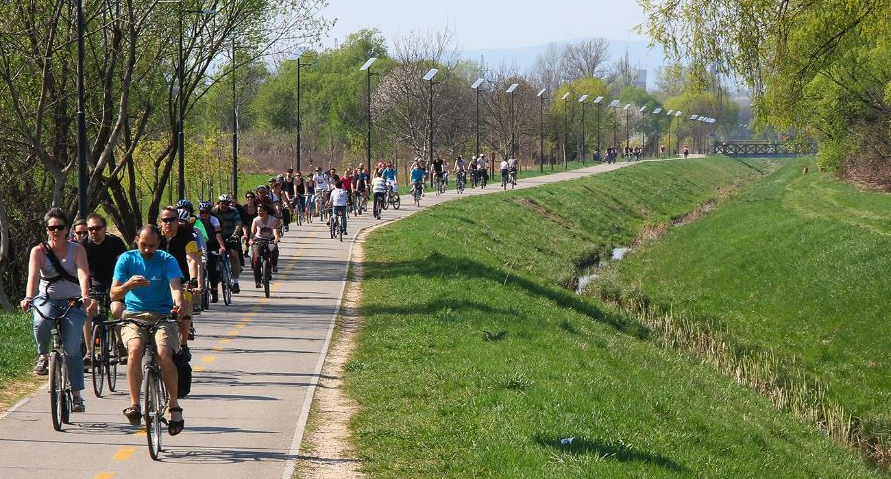
The representatives of Plastic Cup project introduced their initiative as a side-activity of tourism, contributing in cleaning the Tisza River (biggest tributary of the Danube) and maintaining it safe for locals, tourists and aquatic biota. The project targets involving locals and also tourists into the collection of plastic trash in very attractive ways. It is the 6th year of the initiative, and it is getting bigger and bigger. In the focus there is a 7 days competition among ships made of plastic trash collected from the river, but they also investigate plastic waste composition, round tables and other events. In 2017, 19 tons of plastic, mostly plastic bottles, were collected.
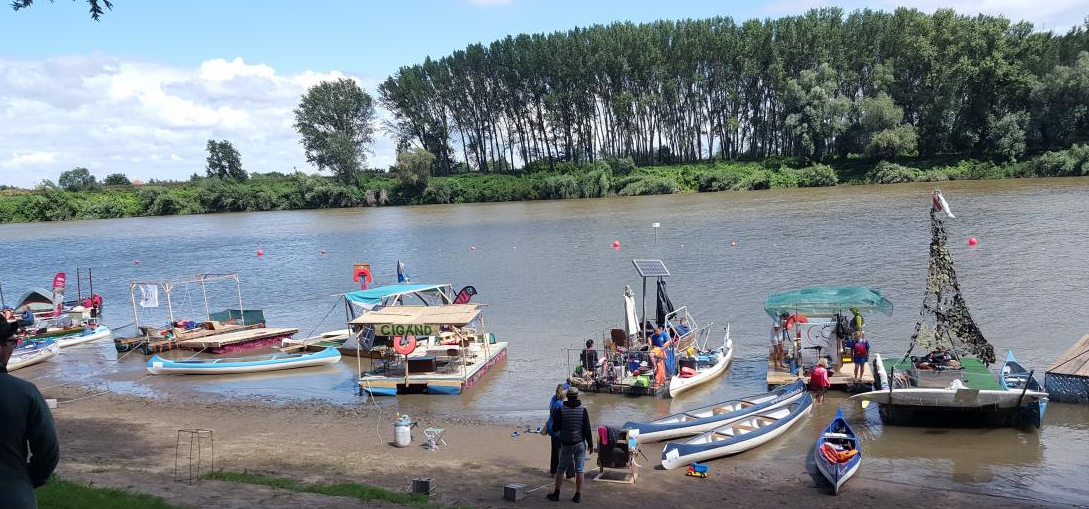

11. Mag. Georg Frank: Networking the existing capacities
Workshop on networking the existing capacities revealed very different and diverse opinions from the audience.
Coordinator of EU Strategy of Danube Region, Priority Area 6 emphasized the missing level of macro regional harmonization. For example in the field of awareness raising: Where can we start? How to connect? Everything needs to be connected or do we need priorities? Maybe we need good examples first. We have to collect best practices and raise them to governmental level, putting to spotlight. Also macroregional strategies could be mainstreamed to strengthen one another.

Expert from the Hungarian DINPI National Park raised questions about the involvement of local people. How could nature conservation be attractive for them? How could it be beneficial economically?
Georg Frank, expert from Donnau-Auen National Park, Austria answered that nature conservation not necessarily gives added value for locals. In the same time national parks have small financial resources compared to economic actors. Some other actors – for example national initiatives – should give economic reasons.
Representative of DG ENV stated that the system of biodiversity accounting is to leapfrog this gap: this is a tool to give economic value for biodiversity.
It has been stated that ecological corridors are not working according to official data. Hydropower should definitely not been considered green, because cause it harms and destroys ecosystem. Highways were built wildly in the last 10 years in Hungary. As agricultural activities are not allowed along the highways, these areas can offer habitat for endemic species. For example small mammals coming from the Great Plain to Small Plain migrate beside M3-M0-M1 highways.
Expert from WWF suggested to give focus on health and illness. Clear water, clean air is value; they are essentials for health. They can be shown to local people as value. Locals have to be active for sustainability, so we have to show values. Expert from Austria added that health as such is missing from EU Strategy of Danube Region. It could help to bring programs closer to people. "It is a message!"
Co-Coordinator of EU Strategy of Danube Region, Priority Area 6 highlighted the possible added value of eco-tourism. An observation has been shared as Danube springs in wealthier countries and flows towards poorer countries, while in the aspect of biodiversity it is vice versa. Anyhow, it has been agreed that we are responsible for how youth by the river grow up. We need to raise their awareness. Effective results need decades.
Representative of DG ENV admitted that external financial resources are needed. Hopefully after 2020 there will be available funds. Still, it has to be tested what is working well, and what does not.
It has been also stated that macro regional strategies can help policy and politics with experiences, summarising financial and organisational needs. Macro regional strategies could learn from each other; they could be linked more closely.
Importance of networking things was widely agreed: to find someone who works on the same problem and to find something that can be done together - and to elaborate project together.
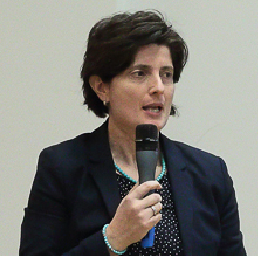
12. Krisztina Teréz Szabó: good examples and challenges in funding possibilities for future projects
As a setting-the-scene presentation Ms. Krisztina Teréz Szabó introduced the key funding opportunities provided by the European Union for 2014-2020 in relation with the 6th Priority Area of the EU Danube Region Strategy.
With a budget of EUR 454 billion for 2014-2020 the European structural and investment funds (ESIFs) are the European Union’s main investment policy tool (76% of EU budget):
- the European Agricultural Fund for Rural Development (EAFRD),
- the European Maritime and Fisheries Fund (EMFF),
- the European Regional Development Fund (ERDF),
- the Cohesion Fund (CF),
- the European Social Fund (ESF).
Besides the ESIFs, the other main funding programmes are the Horizon 2020 , LIFE and Interreg Danube Transnational Programme , which can significantly contribute to the objectives of the protection of biodiversity, landscapes, air quality and soils.
Concerning the future of funding: designing the post 2020 Multiannual Financial Framework (MFF) has begun and member states are allowed to place their comments and recommendations at the latest by 29th May 2018.
The group discussion focused on the following two major aspects:
- what are the good practices; and
- what are the main challenges or development areas in EU funding possibilities?
Members of the workshop identified the following challenges and development areas:
- the ESIFs are running out of the sources and it also means that we should spend the funds more efficiently;
- harmonized spatial planning is a necessary basis so we should harmonize and improve it at EU level as well;
- to ensure the non EU (own) co-financing rate is a general and significant obstacle for the applicants and own pre-financing is not possible for many participants, especially for NGOs and local governments;
- it is often hard to plan ahead because of the long period of the evaluation processes and decision-makings in some EU programmes;
- regarding the Danube Transnational Programme, it is a great challenge to meet the needs of the EU Danube Region Strategy and to adjust the Programme to the thematic objectives. The Programme should be better tailored to the needs of the geographical regions and to the structures of the priority areas.
Good examples and practices were also identified by members of the group:
there are negotiations at EU level on expanding and increasing certain funding sources (e.g.: LIFE Programme, especially Integrated Projects with larger territorial and budgetary scale);
the two stage application system (with pros and cons) helps to reduce the administrative burdens for applicants (e.g.: in LIFE Programme and in Horizon2020);
there are still available funding sources at EU level (e.g.: there is a new call every year in LIFE Programme until 2020);
national co-financing systems are available for some programs and they significantly improve the conditions for the applications and project implementations (e.g.: in LIFE Programme and Interreg in Hungary).
Exhibitions of the event:

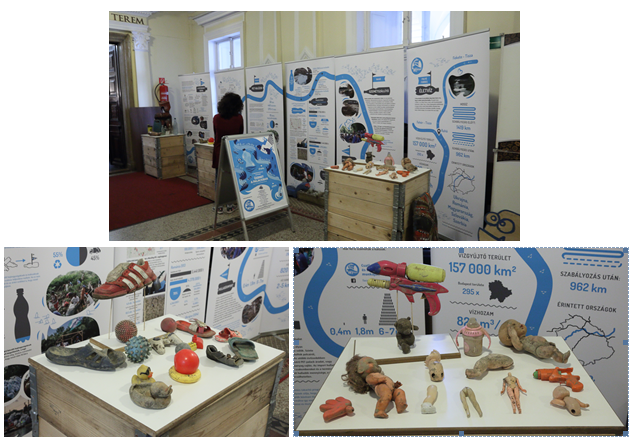

Thanks for Judit Suhayda-Bánszki for the photoes!
For more information please also visit:




